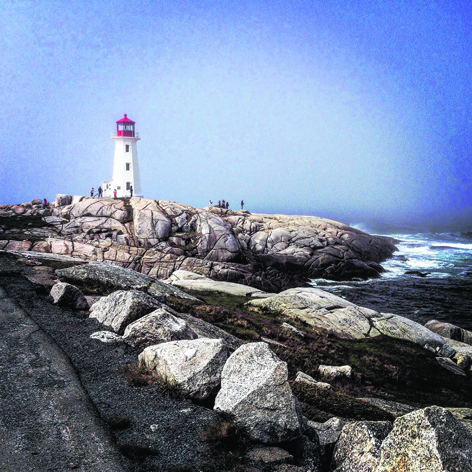From the freshness of the seafood to the consistent quality of the local wine, tastes are fresh, meals are homely and local produce is king.
But Nova Scotia’s biggest asset by far is its people, and when you combine their big personalities with the region’s endearing history and love of the outdoors, special things start to happen.
In large parts of the province outwith the capital city, Halifax, life is stripped back and simple.
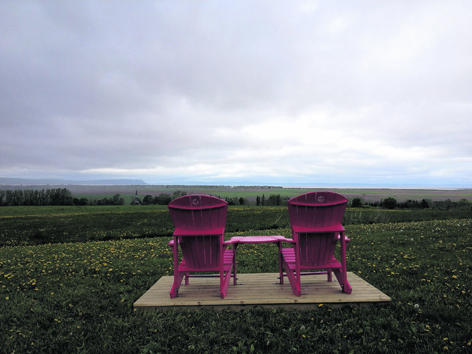 But wherever you go, you find welcoming people, full of optimism, with a tireless ability to view hardships – both past and present – with stoical resilience.
But wherever you go, you find welcoming people, full of optimism, with a tireless ability to view hardships – both past and present – with stoical resilience.
With a place so heavily draped in history, reflection on the past brings inevitable tragedy.
Halifax has been hugely contested by various world powers for hundreds of years due to resting at the head of a huge natural harbour, the Bedford Basin, on the eastern-most corner of North America.
Over a million immigrants and refuges have passed through the port, and it remains a busy modern shipping centre.
But today’s quaint waterfront seems worlds away from the horror and loss of harsher times.
In December, 1917, the Halifax Explosion cost around 2,000 lives and injured some 9,000 more, with debris from the collision between the explosive-laded French military vessel, SS Mont-Blanc, and the Norwegian, SS Imo, travelling over two miles.
Five years prior, the infamous Titanic sinking off of Newfoundland forced Halifax to play a key support role. Some 209 bodies were brought to back to the port and 150 of those were buried in three dedicated cemeteries.
The city’s Maritime Museum of the Atlantic offers poignant and expansive tributes to both disasters while showcasing varying other nautical exhibits.
The one image ingrained in my mind from that visit is the tiny leather shoes of 19-month-old victim Sidney Goodwin.
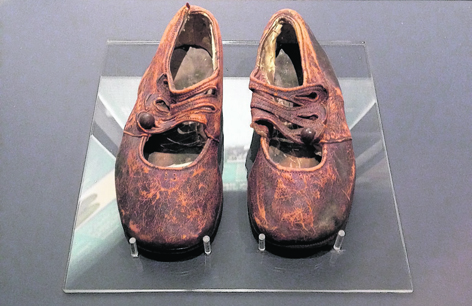 His unidentified body was originally buried in the Fairview Titanic cemetery as “The Unknown Child” and he became a silent ambassador for the souls of all the lost children who were never found. His unlikely identification in 2008 after a DNA match with a surviving maternal relative only served to increase his stature and bolster his fascinating life story – horribly short thought it was.
His unidentified body was originally buried in the Fairview Titanic cemetery as “The Unknown Child” and he became a silent ambassador for the souls of all the lost children who were never found. His unlikely identification in 2008 after a DNA match with a surviving maternal relative only served to increase his stature and bolster his fascinating life story – horribly short thought it was.
Sidney is one of 121 buried in the Fairview Cemetery – a collection of graves as chilling as it was moving to witness during a whistle-stop city tour with local guide Al DesLaurier.
Through stories told and recounted with Al and many others, the province’s tempestuous relationship with the sea became evident.
He said: “The sea was very important to us and very dangerous to us.
“It is angry here – there are more sunken ships off Nova Scotia than anywhere else on the planet.
“During the war, Bedford Basin was safe, but Halifax was notorious for German U-Boats, disrupting the Atlantic merchant and armed runs between the UK and North America.
“And here, at Pier 21, immigrants from all over the world came, running from religion, running from poverty, running from anything. Everybody wanted to be free of something.”
Nova Scotians were and still are tough. They deal with the daily pressures of life with charming patience. They know what they are and take pride in that, yet lack all trace of arrogance.
Halifax itself is a university hub. Forward-thinking, but mindful of what was endured for the sake of progress.
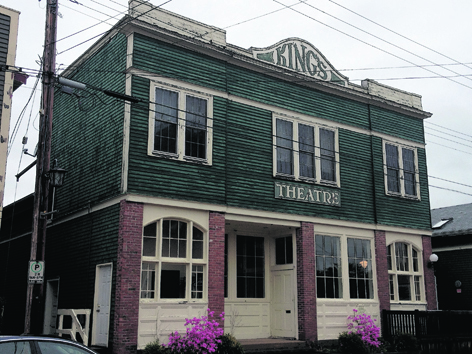 From the town’s Citadel, I was offered a great 360-degree view of the city – a developing skyline of glass and steal towers aside surviving 18th and 19th century builds. A really walk-able place, it comes alive after sunset, with over 80 clubs, pubs and restaurants creating a night-time buzz. Just steps from our downtown Sheraton hotel sat the Five Fishermen Restaurant, which, like so many buildings in the city, had many tales associated with it.
From the town’s Citadel, I was offered a great 360-degree view of the city – a developing skyline of glass and steal towers aside surviving 18th and 19th century builds. A really walk-able place, it comes alive after sunset, with over 80 clubs, pubs and restaurants creating a night-time buzz. Just steps from our downtown Sheraton hotel sat the Five Fishermen Restaurant, which, like so many buildings in the city, had many tales associated with it.
In the Titanic recovery, it played a key role for wealthier victims as a funeral home. And as I enjoyed my Sambuca-marinated shrimp, a seafood platter and a deliciously smooth ice-wine-cask Glen Breton malt, I was opened up to the ghostly goings-on. Traditionally set with rich, wood-panelled interior, it made for the perfect setting and I left thoroughly satisfied, if not a bit spooked. I only had one night in Halifax, but it is the kind of place where nipping into The Old Triangle Ale House for a pint ends in teaching half the bar to Gay Gordon to the soundtrack of a live fiddler and a guy playing the spoons.
Venturing on to the quaint port town of Lunenburg, the urban hustle made way for smatterings of bright wooden buildings, in-keeping with colonial architecture dating back to the 18th century. As we drove down the south shore, we stopped off at Peggy’s Cove to encounter its famed lighthouse. Beauty is not something I would immediately associate with lighthouses, but Peggy’s was quite something.
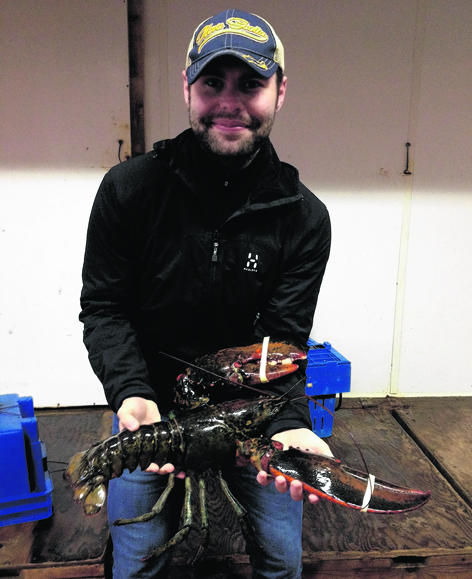 After pausing briefly to pester two local seafarers doing jetty business over freshly-caught lobster, the impressive white beacon revealed itself from the folds of tide-warn granite cliffs and shone against a brooding sky. It was easy to see why it is one of the most photographed places in Canada. In the artsy Mahone Bay during lunch and eventually in Lunenburg itself, the rows upon rows of brightly-coloured buildings made for a vibrant waterfront.
After pausing briefly to pester two local seafarers doing jetty business over freshly-caught lobster, the impressive white beacon revealed itself from the folds of tide-warn granite cliffs and shone against a brooding sky. It was easy to see why it is one of the most photographed places in Canada. In the artsy Mahone Bay during lunch and eventually in Lunenburg itself, the rows upon rows of brightly-coloured buildings made for a vibrant waterfront.
My overnight retreat, the Mariner King Inn, in the heart of Lunenburg’s old town consisted of three adjacent townhouses – candy apple, cranberry and dark blue in colour.
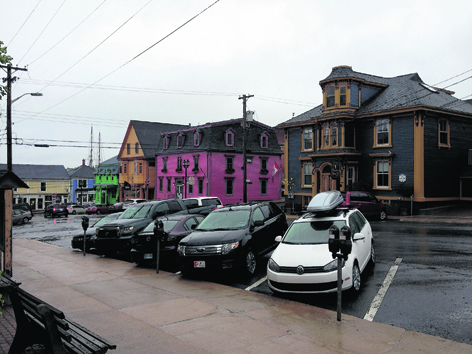 Leaving the loud exterior of my navy abode on the street, I entered into an 19th century haven of sophistication, antiques and ornamental furniture. The steep-rung staircase did make suitcase management a tad challenging, but the room was a lovely mix of the traditional and desirable modern conveniences.
Leaving the loud exterior of my navy abode on the street, I entered into an 19th century haven of sophistication, antiques and ornamental furniture. The steep-rung staircase did make suitcase management a tad challenging, but the room was a lovely mix of the traditional and desirable modern conveniences.
The fishing industry may have dried up, but world heritage site’s proud heritage of rum-running and ship-building was evident in the fisheries museum, aboard the racing schooner, Bluenose II, and through the countless yarns told on my harbour cruise in the rain aboard a little boat complete with cocktails.
Dinner followed at Rime and being in such a seafood haven, I went for poached-so-simply scallops and local pork – both of which proved to be exceedingly moreish.
Departing Lunenburg, we left the south shore and headed north for the Kejimkukik National Park. Before French and British colonisation, the native Mi’kmaq tribe’s territory included all of Nova Scotia. During a trail walk through the park – staring out across the vast lake – it was easy to envisage the natives roaming these lands and why so many of today’s wanderlust generation come to camp and explore the wildlife.
Crossing “Keji” park took us to Digby, world-famous for its seafood, and the Digby Pines golf resort and spa. Sat on the Bay of Fundy, it has been welcoming guests since 1929 and would have definitely set the bar for luxury in its prime.
The following day in Annapolis Royal was irresistible. I didn’t want to leave. Formally the French settlement of Port Royal until the British Conquest of Acadia in 1710, the town – centred around Fort Anne – was the capital of Acadia and later Nova Scotia for almost 150 years.
The main road, St George Street – one of the oldest streets on the continent – was like a film set. Far from the conflict of yesteryear, today’s crop of locals were straight-talking and incredibly open. Being there didn’t just mean visiting Canada’s oldest street, it means staying on it. I wasn’t just touring 200-year-old houses, I was eating in them. I didn’t drink in the country’s smallest bar, I socialised in it.
The Hillsdale House Inn, where I stayed, was a prime example of luxury and grandeur without a hint of stigma or pretense.
Annapolis trader Cindy Wilson, owns a high-end Asian antique store in the town and summed up the Annapolis attraction perfectly.
She said: “We just need to get the people here. WestJet, we love WestJet, because they are trying to open up affordable travel to Canada. “Once people actually get here and see what we’ve got then they start to fall in love with this place and will come back.”
After taking an evening meal at the Garrison Inn – a simply delicious chicken, shrimp and lobster jambalaya, washed down with some more excellent local wine – our Royal stay concluded with a late night graveyard tour at the fort by candle light.
Alan, our guide, appeared in traditional Victorian mourning garb. A 10th generation Acadian, he was absolutely authentic – from his outfit to his heavy French-Canadian accent.
He walked us through the history of the land. With each tale, he breathed life into the weathered names of various headstones with captivating (albeit eerie) narration.
We walked through the English and French graves, then got to the Acadian section. These were his people.
Deported, burnt out and forced into hiding by paranoid British forces, the 300 original French settlers buried there have 3million living descendants across the word.
And to hear Alan speak about his kin and the $5,000 he personally invested to raise a stone memorial to his forgotten ancestors hundreds of years after their wooden crosses had long-since rotted away was extremely powerful.
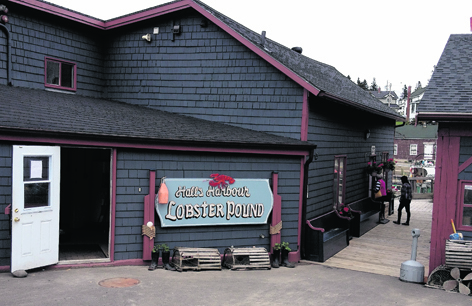 The final stop on my tour took me through the heart of the Annapolis Valley. I spent the afternoon at Hall’s Lobster Pound, which is home of the ultimate lobster dining experience. Not one for the faint-stomached, I picked my very own delicious gourmet crustacean and watched her be prepared in the on-site cook shack. With napkins at the ready and bib fastened, I began devouring. In the home of lobster, sitting on the harbour, cracking claws, I couldn’t have been happier.
The final stop on my tour took me through the heart of the Annapolis Valley. I spent the afternoon at Hall’s Lobster Pound, which is home of the ultimate lobster dining experience. Not one for the faint-stomached, I picked my very own delicious gourmet crustacean and watched her be prepared in the on-site cook shack. With napkins at the ready and bib fastened, I began devouring. In the home of lobster, sitting on the harbour, cracking claws, I couldn’t have been happier.
WestJet’s daily non-stop flights from Halifax to Glasgow run until October 24 this year. Flights last five hours 15 minutes and will be operated by one of the airline’s 136-seater Boeing Next-Generation 737-700 aircraft. Visit www.westjet.com
